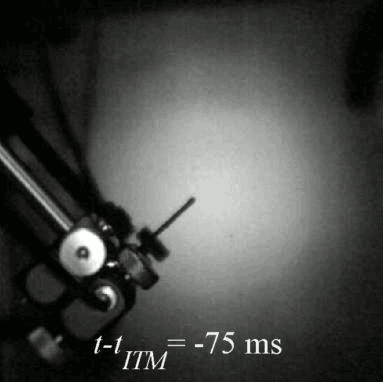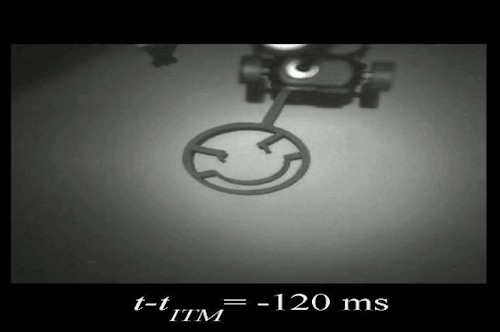How a sudden acceleration change splits gravity waves into a pair of counter-propagating components? ("instantaneous time mirror")
Physics Asked on December 16, 2020
The Nature article Time reversal and holography with spacetime transformations is cited by IFL Fluid Dynamics’ Waves contain lots of information which includes the GIFs below.
While the paper is paywalled,IFL if you use the link given in the post you can view the article online thanks to shared access by the author.
The explanation is thorough and substantial but I don’t understand it. The effect applies to gravity waves on the surface of water. A complex disturbance is made producing a field of low amplitude waves on the surface. At a time a fraction of a second later there is a disturbance in the vertical acceleration of the entire apparatus, as if the strength of gravity were changed.
Each wave component is split into a forward and backward-propagating part, and the backward parts converge a similar time later to reconstruct the original complex disturbance.
Question: But I don’t understand how or why. Is it possible to explain this in fairly simple terms? How exactly can a change in $g$ split each wave into a pair of counter-propagating components?


One Answer
I'm not expert in this field. However, The following may give you an intuitive sense of what's going on.
If a static wave-shaped deformation of a water surface were set up, then suddenly released, it's kind of obvious that two traveling waves would result, moving in opposite directions.
Because the speed of a wave on a water surface depends on the wavelength and the acceleration of gravity, if a wave is on the water and the effective gravitational acceleration is suddenly changed, then it is something like artificially setting up a surface deformation and suddenly releasing it, except that the deformation is moving (but at the wrong speed for its wavelength). The waves that result will have to comprise components that all have the right wavelength-to-speed ratio for the new gravitational acceleration, and will have to add up at the moment of the acceleration change to exactly the same initial wave shape and motion.
Someone else might provide the math to describe this, but it will end up as waves moving in both forward and backward directions.
Answered by S. McGrew on December 16, 2020
Add your own answers!
Ask a Question
Get help from others!
Recent Answers
- Joshua Engel on Why fry rice before boiling?
- Jon Church on Why fry rice before boiling?
- Lex on Does Google Analytics track 404 page responses as valid page views?
- Peter Machado on Why fry rice before boiling?
- haakon.io on Why fry rice before boiling?
Recent Questions
- How can I transform graph image into a tikzpicture LaTeX code?
- How Do I Get The Ifruit App Off Of Gta 5 / Grand Theft Auto 5
- Iv’e designed a space elevator using a series of lasers. do you know anybody i could submit the designs too that could manufacture the concept and put it to use
- Need help finding a book. Female OP protagonist, magic
- Why is the WWF pending games (“Your turn”) area replaced w/ a column of “Bonus & Reward”gift boxes?